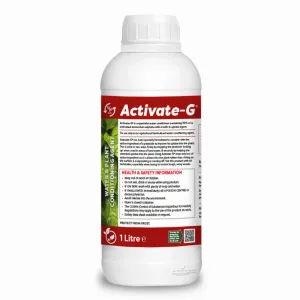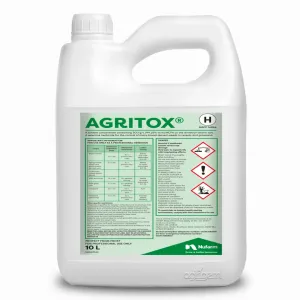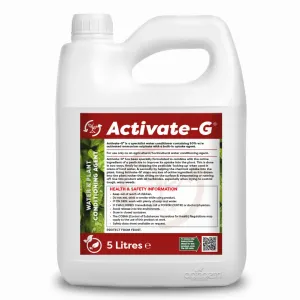You will need:
- Selective herbicide, e.g Headland Polo
- Application improver, e.g Activate G
- Approved applicator (boom sprayer, knapsack sprayer)
- Correct PPE (overalls, rubber boots, chemical resistant gloves & face shield)
The Problems Caused By Soft Rush:
Soft Rush is often found growing in permanent pasture/grazing areas which have poorly drained soils in high rainfall areas. It's a major problem for hay production and grassland grazing areas. The plants quickly become established by spreading their fine root systems which hold water and result in favourable conditions for the rush to thrive. Soft rush can quickly become a dominant plant species with some fields having more than 70% soft rush coverage in areas where it has been left to thrive. This can restrict the amount of grazing available to horses or livestock. Any new grass growth will also struggle to compete with the quickly growing rushes as they germinate quickly outcompeting grass seed. Soft Rush plants are also not very palatable or digestable to livestock compared to grass and provide very little nutritional value. Additionally if the area is being used for hay and silage production then it can impact this as rush is not easily compacted. Thus leaving air pockets in the bales for listeria mould to develop.
Controlling Rush In Paddocks:
During a wet winter weather conditions where active seasonal management can be restricted compaction, soil distrubance, poached grass (see our guide on How To Avoid Poaching) and heavy livestock grazing results in rapid rush infestations. Soft rush can produce up to 10,000 seeds in each yearly life cycle and these can lie dormant in the soil for up to 60 years. If the soil surface is broken by livestock or cultivation etc this can result in any dormant seeds germinating also. The best time to treat Soft rush is when they are actively growing in early spring/summer. An integrated approach of cutting and spraying works best as herbicides work more effectively on new growth.
Use a Selective Herbicide containing MCPA such as Agritox or Headland Polo along with an application improver to help the uptake of the Herbicide. Soft rush also has quite a waxy outer coating to it so an Application Improver will help strip this wax and help the herbicide penetrate the Soft rush deeply.
If cutting or spraying paddocks and/or pastures for soft rush then take care as these can be very important breeding habitat for certain ground nesting birds. During the late summer months these birds use the rushes as protective cover. Although areas with over 70% rush coverage are considered too dense to be valuable to birds, insects or as a wildflower habitat so heavy infestations of rush can have an adverse impact.
How To Prevent The Future Spread Of Soft Rush:
> Soil management is key to addressing the problem of Soft rushes. Any overly wet/poor draining areas of a Field need to be addressed: Install or Repair/ Maintain any field drainage systems. Remove or break up any soil compaction to aid drainage also.
> Practice good grazing management – Do not over graze in winter as this can encourage infestation by creating bare patches where rush seeds can establish.
> Carry out topping/cutting if soft rush has already began growing. Do this before seed heads have had chance to develop in early spring/summer.
> Catch any signs of new growth early and treat with a selective herbicide.
> Maintain nutrient levels in the soil by fertilising. Carry out a soil analysis test to see if the field is depleted of nutrients.
> If you have areas which are particularly prone to becoming wet, sow a grass seed mix which is hardwearing and tillers quickly. Paddock Grass Seed is ideal as it contains a good mix of Rye grass.
We recommend using a selective herbicide containing the active ingredient MCPA, for example Agritox or Headland Polo.
For more information on controlling soft rush, please get in touch with our sales team on 01522 246491.







